So I've not updated this since, you know, 2014. I thought about it in 2016, to keep up the every two years thing, but there were a number of films on my list I needed to rewatch, to make sure I still liked them. Most I did, some I did not.
This list has some of those same issues: There are about five flicks on here I've only seen once. But I stand by it. Perhaps in another two (or four) years it those with only one viewing will be replaced. Others almost certainly will be by then.
Anyway, without further ado, here are My Top 101 Movies, by Year:
This list has some of those same issues: There are about five flicks on here I've only seen once. But I stand by it. Perhaps in another two (or four) years it those with only one viewing will be replaced. Others almost certainly will be by then.
Anyway, without further ado, here are My Top 101 Movies, by Year:
Sherlock, Jr. (1924)
Buster Keaton directs and stars in this
under-an-hour comedy as the young, extremely agile, film projectionist. The
sight gags are some of the best (and most copied) in cinema.
Sunrise (1927)
A moving story of a couple's romance - the
camera transports the viewer through visuals reminiscent of film, photo and painting in a
hallucinatory, but beautiful, reverie.
The Last Command (1928)
The tragedy only deepens since it's
cast as a farce: a general of the Russian army banished after the Revolution
finds himself playing himself in a movie in Hollywood. Incredibly, based on a true story.
The Passion of Joan of Arc (1928)
Falconetti's brilliant portrayal of
Joan, and the visually stunning shots and close-ups, make for one of the most
beautiful and moving films ever made.
A Man with a Movie Camera (1929)
Incredible cinematography documenting
modern Soviet Russia: no other film has such a unique and powerful structure, completely
rewriting the language of how to view film.
M (1931)
Fritz Lang's psychological thriller was
initially a docudrama of current events, which has subsequently become an
allegory of public and private madness.
Grand Hotel (1932)
This is as close to Chekhov as I can
get: A series of character portraits, performed by some of the best actors of the
day, as they cross paths in the Grand Hotel: Garbo, Beery, two Barrymores, and
Crawford.
Duck Soup (1933)
The best of the Marx's films,
splendidly blending slapstick and witty dialogue: most of Groucho's funniest quotes come
from this one.
King Kong (1933)
The fun thriller that still is a good
watch (even if the graphics aren't fantastic and times have changed): Kong entertains in the classic
scenes.
Dodsworth (1936)
A finely mature story, told by William Wyler, of a
husband and wife's respective, and very different, midlife crises.
Modern Times (1936)
Chaplin's best performance blends humor
with social satire (the first images are of sheep juxtaposed by people leaving
a subway) in a light-hearted, but reflective, romance.
Grand Illusion (1937)
Renoir tells the story of a group of
officers who escape from prisoner of war camps during the First World War.
Throughout, with humanity and sagacity, both sides muse on deeper themes.
Olympia (1938)
One of the most stunning documentaries
ever made, by Leni Reifenstahl, brilliantly portraying the human physique.
Ninotchka (1939)
Splendidly humorous story focuses on
Garbo's cold Soviet exterior melting in Paris, surrounded by amusing characters
in outstanding situations.
The Wizard of Oz (1939)
Flying monkeys, a cowardly lion, and
great songs add to an engaging plot of Dorothy's quest to find the Wonderful
Wizard.
Fantasia (1940)
One of Disney's best cinematic pieces,
brilliant animation of mushrooms, dinosaurs, and a Night on Bald Mountain
accompany the classical music.
His Girl Friday (1940)
Cary Grant and Rosalind Russell
compliment each other in one of the funniest and best-written romantic comedies
ever, portraying reporters fighting for a story.
Citizen Kane (1941)
Watch this for Orson Welles'
performance. The story is intriguing enough, and the cinematography is, on
average, remarkable. But Welles' acting makes viewing worthwhile.
Casablanca (1942)
The classic, oft-quoted story of Bogart's Rick Blaine's growth from indifferent barkeep to patriot who stands up against Nazis.
Children of Paradise (1945)
The cast provides a brilliant display of melodrama in a film about a troupe of
actors in France in the 1830s who are trying for love, fame, or to just get by.
The Third Man (1949)
Film Noir peak with more supreme acting by
Orson Welles in the black markets of post-war Vienna.
White Heat (1949)
Cagney's brutal character will keep you
on the edge of your seat as his tragic story relentlessly plays out.
An American in Paris (1951)
Gene Kelley takes the title role in a
romantic musical comedy featuring great dance sequences, Gershwin's score, and
Oscar Levant's masterful piano pieces.
Ikiru (1952)
Kurosawa's story of an elderly
bureaucrat who looks back and realizes his life has been of no consequence,
leading to redemption. The counter to 'It's a Wonderful Life'.
Umberto D. (1952)
The entire cast is comprised of
non-professional actors, a fact no one could figure out on their own. The
moving story of an aging pensioner's struggle to get by,
accompanied by his dog, reels you in.
Ugetsu (1953)
The story of two couples, neighbors,
and their various fortunes in war: all four take different paths in the chaos
and have their own trials to overcome.
Seven Samurai (1954)
The epic of the seven samurai
without a leader who must protect a farming village from gangs, and arguably the best Japanese film ever made.
The Apu Trilogy (1955, 56, 59)
Satyajit Ray's magnificent three-part
film tells the story of a child, an adolescent, and a young man's hardships and
triumphs.
Smiles of a Summer Night (1955)
Bergman claimed he had two options that
summer: "Write Smiles of a Summer Night or kill myself." Luckily he
chose the path of endearing romantic comedy.
Invasion of the Body Snatchers (1956)
This sci-fi horror is much more than just a glorified 'B' movie or allegory of rampant McCarthyism. It succeeds in terrifying the viewer with an original, frightening depiction of
humanity.
Bridge on the River Kwai (1957)
Alec Guinness' best role is on display
here as the British Officer holding on to his principles in a Japanese POW camp
that is trying to break his spirit.
Sweet Smell of Success (1957)
Great drama doesn't require over the
top scenarios: Tony Curtis is a small-time press agent up against the giant of
his world: a columnist who refuses to make him.
Vertigo (1958)
Jimmy Stewart's great performance as
the retired detective who investigates the split personality and past of a
beautiful woman with whom he falls in love.
The 400 Blows (1959)
Launching the French New Wave, this is the
story of a youth growing up, and his progression from a kid who cuts up in
class to being taken into state custody as a 'delinquent'.
Hiroshima Mon Amour (1959)
Identities, place and memory are all up
for grabs in this landmark film about unlikely romance at the epicenter of the
post-modern world.
La Dolce Vita (1960)
Marcello Mastroianni (playing Marcello)
would, in his later collaboration with Fellini, portray the director in his
autobiographical, surrealist 8 ½. In this film Marcello is far more
human, rarely engaging with, but bemusedly observing the reckless behavior of
the rich and famous.
Psycho (1960)
Hitchcock's ultimate mystery-suspense-thriller
captures one of the most terrifying personalities ever created, in brutal black
and white shots.
Yojimbo (1961)
Mifune delivers a one man tour d' force
satire western: the plot is standard (one man cleans up a corrupt town) but the
performance, humor, and stark visuals are way beyond par for the course.
Jules and Jim (1962)
Perhaps the best love triangle
portrayed in film. Or the best story of two men's friendship. Or the story of
France and Germany's love-hate affair. You decide.
Lawrence of Arabia (1962)
Peter O' Toole stars as T.E. Lawrence, who attempted to single-handedly unite the Arab world, surrounded by great
co-stars and sweeping cinematography directed by David Lean.
The Manchurian Candidate (1962)
Angela Lansbury shines as the
villainous over-bearing mother who wants to put a sleeper in the White House,
leaving Sinatra to stop her son from an assassination.
To Kill a Mockingbird (1962)
Growing up in the South, Scout looks to
her father Atticus, played superbly by Gregory Peck, as a moral compass
surrounded by inequality.
8 1/2 (1963)
The ultimate movie about making a
movie, a director loses his inspiration and struggles to come up with the means
to express himself.
Dr. Strangelove or: How I Learned to Stop Worrying and Love
the Bomb (1964)
Sellers plays three roles in Kubrick's black
comedy: a British officer, President of the United States, and his adviser, the
eponymous Strangelove, all as the world may be ending.
A Hard Day's Night (1964)
It's been a while since a movie has
really captured my spirit, but the partial documentary, starring the Fab Four,
is not just fun, it's cinematographically mesmerizing.
The Battle of Algiers (1966)
The extreme grittiness of this film is
found in the deception of camerawork which makes you forget it's actors in a
drama and not an actual documentary of the uprising in Algeria against the
French colonials.
The Good, The Bad, and The Ugly (1966)
The story of treasure lures you in with
the three outlaws, set against the background of the Civil War. The classic visuals
and production would be beat only by Leone's own efforts two years later.
Persona (1966)
An actress' lack of speech finds her
being cared for by a young nurse. Their cottage retreat turns from an isolated
holiday to a painful co-dependence and jealousy of each other's afflictions.
2001: A Space Odyssey (1968)
Beyond the apes and Technicolor
swirlings is the bulk of the film: an astronaut's race to beat an evil
supercomputer, the HAL 9000, from destroying his ship and himself.
Once Upon a Time in the West (1968)
Sergio Leone's cinematography can be
beat only by Ennio Morricone's score and Henry Fonda's role as 'Frank' in this Western epic
of how the West was really won.
A Touch of Zen (1971)
The greatest of Kung Fu masterpieces,
in part for its amazing fights (the inspiration for Crouching Tiger, Hidden Dragon) as well as its engaging plot.
The Discreet Charm of the Bourgeoisie (1972)
A surrealist look at the French
bourgeoisie is unclear if what is portrayed is dream, reality, production or
something else. The cast just goes along with it, whatever it is.
The Godfather Parts I+II (1972, 74)
I think the second half is superior to the
first. Regardless, the two combined creates a story told in three compelling narratives,
portrayed by top actors, of the rise, and fall, of one of America's most powerful
families.
Solaris (1972)
Suspenseful and arthouse don't often go
together well, but Tarkovsky makes it seem natural in this science fiction tale where the creeps don't come from an
evil overlord, aliens, or HAL. Instead the uneasiness is provided by ourselves
in a reflection on conscience.
Day for Night (1973)
Capturing the process of making a film
the cast, crew, and director (who is played by the director Truffaut himself)
exemplify the hysteria, pleasure, and drama of a movie set.
Blazing Saddles (1974)
Cleavon Little and Gene Wilder co-star with
Madeline Khan in the farcical depiction of life in the West - at least as it
appears on the Hollywood back lots.
Chinatown (1974)
Jack Nicholson is trying to unravel a
few mysteries at once, while keeping his nose out of trouble, investigating
conspiracy and murder.
F for Fake (1974)
Welles guides us through a film essay
on fakes and frauds from the world of the arts, while touching upon questions of
artistic merit and value.
Barry Lyndon (1975)
Lyndon's tragic arc plays out slowly,
yet you can't imagine telling the story at a different pace. The shots are
truly picturesque: freeze-frame and you could hang them on your wall.
Monty Python and the Holy Grail (1975)
For Arthur and his K-nig-its to find
the Holy Grail leads to obstacles such as the Knights who say 'Ni!', murderous
bunnies, and silly Frenchmen.
Network (1976)
A satirical, but eerily prescient take on America's consumerist approach to news media and television's increasing influence over our lives.
Taxi Driver (1976)
Shot after shot confirms Scorsese's
talent with the camera and scene after scene De Niro's psychotic persona
captivates.
Star Wars IV: A New Hope (1977)
Luke, Han, and Leah join the Rebellion
under the guidance of Obi-Wan and assistance of wookies and droids to fight the
Empire, and its masked face: Darth Vader.
Apocalypse Now (1979)
A man is sent up river in Cambodia to
find Col. Kurtz, Marlon Brando, who has gone AWOL during the height of Vietnam;
the further up river the more primitive the world becomes.
Mon Oncle D'Amerique (1980)
Is it a documentary on behaviorist
psychology? A drama of three individuals’ mid-life crises? The answer is, pleasantly,
both.
My Dinner with Andre (1981)
A
conversation between Andre Gregory and Wallace Shawn perfectly captures,
sometimes with depth of feeling and sometimes with irony, the act of two people
coming together and discussing serious things.
Blade Runner (1982)
Harrison Ford is specially trained to
track down replicas that have gone astray in the future, and has to find four
particularly difficult cases while battling with his own conscience.
Koyaanisqatsi (1982)
With no conventional plot, or
documentary theme, 'koyaanisqatsi' translates from Hopi as 'life out of
balance', as exposed by the images and music.
Brazil (1985)
Gilliam's masterful story of a man in
the future, played by Jonathan Price, who needs to unravel a mystery but instead
discovers the unpleasant underbelly of his society.
The Purple Rose of Cairo (1985)
A nervous, desperate Mia Farrow, who finds
her escape in movies during the Depression, is jolted into a real on- and
off-screen romance.
The Princess Bride (1987)
True love between Buttercup and Westley
must overcome a pirate, a Spaniard, a giant, and a Sicilian, all before
entering the Fire Swamp, joking along the way.
Wings of Desire (1987)
The story of an angel who feels the
need to see more than the colorless, weightless spiritual world in which he
cannot intervene, who breaks through to humanity.
A Fish Called Wanda (1988)
Kevin Kline is the brilliant gem
surrounded by Cleese, Palin, and Jamie Lee Curtis in a romantic comedy caper that's not
safe for fish or small dogs.
Cinema Paradiso (1988)
A master-work of nostalgia and embodied
memory, as viewed by the movie projectionist and the movie director.
Goodfellas (1990)
The brilliant trifecta of Mafiosos (De
Niro, Pesci, and Liotta) execute Scorsese's peculiar wish to blend a mob movie
with a "rollicking road picture".
Farewell My Concubine (1993)
The sublime story of two stage brothers, king
and concubine, whose lives are a reflection of the opera they perform and the
turbulent times they live through.
Groundhog Day (1993)
Bill Murray is the cynical newsman who
finds himself reliving the same day of his life over and over: especially
comedic are his attempts to off himself, before redemption.
Jurassic Park (1993)
Sam Neil and crew are trapped on Spielberg's masterful invocation of an island where dinosaurs have been brought back to life, as things start to go
suspensfully wrong.
Chungking Express (1994)
Chinese 90's romance: Parallel stories
revolve around lovesick cops and fast food, in an atmosphere of Hong Kong noir.
Clerks (1994)
Two clerks bitch about their jobs and
lives, with minor escapades and great comic dialogue during a hard day at the
store.
Pulp Fiction (1994)
Three interwoven stories: A hit man
taking the boss' wife out for a night of fun, a boxer trying to avoid the boss, and
the hit man and his accomplice needing some assistance with body removal.
The Shawshank Redemption (1994)
Tim Robbins and Morgan Freeman find
themselves prison mates in Shawshank, where they bond and lift each other up
and out, into hope.
Ulysses' Gaze (1995)
A man's journey to find the first film
leads him to retrace his own childhood steps in the war-torn Balkans.
Dil Se.. (1998)
Bollywood
reached new maturity with Mani Ratnam’s story of forbidden love in the backdrop
of dangerous times. But there’re songs and dances too, provided by A.R. Rahman,
such as the wildly popular “Chaiyya Chaiyya”.
The Big Lebowski (1998)
The Dude doesn't want to do much but
drink White Russians, listen to Creedence, and go bowling with his buddies. Despite
this he gets mixed-up in a kidnapping caper.
The Truman Show (1998)
Truman lives a normal life, but soon it
starts to unravel. His quest to come to grips with what is reality would
ironically precursor the 'reality television' movement of the next decade.
Snatch (2000)
Guy Ritchie infuses comedy into a
gangster film full of boxing, guns, dogs, pikeys, and a diamond the size of
your fist.
City of God (2002)
The slums of Rio provide a horrific
breeding ground for gang warfare where the gangsters running the streets are
mere children.
Talk to Her (2002)
Subtle, disturbing, and enchanting, it's only after
viewing that you realize how brilliant the modern love story is, from the
cinematography to the messages it cares to share.
Triplets of Bellville (2003)
Near-silent French animation tells the
story of a grandmother and her boy whose dream is to ride the Tour de France;
his kidnapping leads her to recruiting the odd triplets in her rescue mission.
Zatoichi (2003)
A masterful updating of the story of
the blind samurai Zatoichi, played by Takeshi Kitano, who joins unusual
companions in ridding a town from rival gangs.
The Incredibles (2004)
The best of the Classic Pixar flicks: The story is well-animated, funny, and exciting,
moved by the engaging characters. It's also potentially the best superhero movie in an over-saturated era.
Mirrormask (2005)
Hypnotic collages of visuals bring to
life Gaiman's novel, with bright, funny characters in a fantastical story about
the girl who grows up in the circus and wants to escape to the normal world.
The New World (2005)
If you like
lengthy, longing, shots of rivers, trees, and various people encountering each
other for the first time, Malick’s contemplative and mythological tale of Virginia
and London is for you.
Paprika (2006)
Satoshi Kon blends together his own
visions, developing since Perfect Blue, with major themes, tackled by
anime since Akira, on the role of science and technology, reality and
dreaming, individuality and avatar.
The Fountain (2006)
Aronofsky
keeps the visuals impressive while Hugh Jackman’s remarkable performance
elevates the time-travelling fantasy plot that deals with death, spirituality,
and rebirth as he attempts to cope with loss.
The Wind That Shakes the Barley (2006)
A sober and
powerful anti-war meditation set during Ireland’s War of Independence and Civil
War. The vignette style creates a powerful storytelling of a conflict, not so
long ago, that pitted brothers against each other.
Synecdoche, New York (2008)
Charlie Kaufman provides a sort of Borges-inspired anti-Truman
Show, where the man constructing the reality knows it's false, and the most
inspiring moment is the one which is rehearsed and stagy.
Uncle Boonmee Who Can Recall His Past Lives (2010)
A ponderous film, that gives you time
to reflect but doesn’t drag – a sort-of Juliette
of the Spirits without having to quickly turn your head, or catch the
corner of your eye, to see the world just beyond.
A Girl Walks Home Alone at Night (2014)
Darkly funny and visually compelling, we need more stories about skateboarding feminist Iranian vampires.
The Martian (2015)
Perfectly combining comedy and
suspense, existential reflection and Ridley Scott sci-fi, Matt Damon and fellow cast provide
an uplifting and energizing portrait of potential near-future space travel.


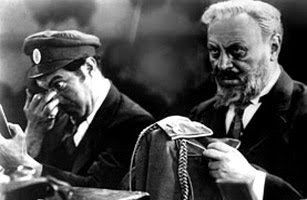



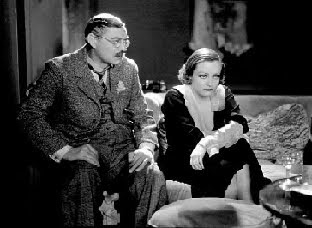


























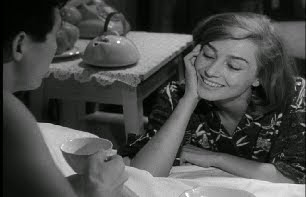














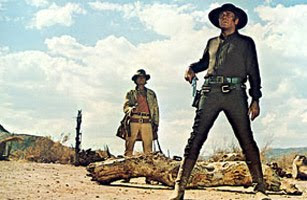














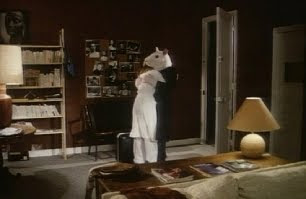





















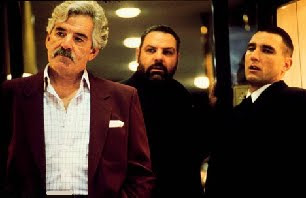














No comments:
Post a Comment